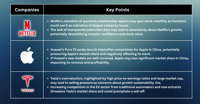Gains in dollar after NFP could be temporary, buy EUR/USD?
None of the factors pressuring dollar lower have changed after strong US jobs data
Dollar boosted by better than expected US job data. It raises the big question now whether the dollar’s uptrend will restart or it’s actually an opportunity to sell the currency at rally. We think the latter one stands at a slightly higher possibility.
Let’s look at the data first. The largest economy added 209,000 jobs last month, the labour department said on Friday, which topped analyst forecasts of 180,000. June’s non-farm payrolls growth was revised higher to 231,000 from 222,000 previously. The unemployment rate slid further to 4.3% from 4.4 per cent in June, matching a 16-year low struck in May.
The jobs gain in US has rarely flagged in recent years, and average monthly gains of 185,000 this year have nearly matched the pace set in 2016. The strength of the labour market has helped to justify Fed plans for tightening in past 8 months even in the midst of low inflation. The central bank is planning to announce a start to unwinding of its quantitative easing program next month, with the possibility of a further rate increase in December depending on the pace of price growth. However, we think the three reasons driving dollar lower in past months have been well existed, and that means the dollar is not set for a sustainable rebound any time soon.
1) US political turmoil
Officials in Washington increasingly doubt Trump’s command of his job, notably including the ability to persuade. On Capitol Hill, prominent Republicans ignored the president’s command to continue working on healthcare and instead turned to tax policy. Resilient payroll data certainly not able to reverse Trump’s policy weakness, more investors will realise most of the key economic stimulus he promised at election are not going to be realised.
2) Fed’s upcoming hiking pace depends more on inflation growth, not jobs
What is the relationship between inflation and wage growth? It’s very high according to historical data. Recently, wage growth and inflation have been low relative to US history. Perhaps more importantly, this figure shows even wage growth has touched 0.3% in July with falling unemployment rate, it’s not sufficient to boost the inflation towards Fed’s 2% target.
3) Better US economic data actually makes it easier for ECB to tighten its policy
US economic condition is not very difficult to transfer to euro zone. In other words, better US data could suggest euro zone economy is also improving, and could make ECB tighten earlier than market projected. This would be a major support for EUR/USD. Given euro’s high weighting at dollar index (over 55%), a strong euro would make dollar even more fragile. Euro zone unemployment fell to its lowest level in eight years in June, according to data last week. Its key inflation figure picked up to its fastest pace since 2013, underscoring the gathering momentum of the bloc’s economic expansion. In all, the latest data support ECB president Draghi’s recent assertion that reflationary ones are gradually replacing deflationary forces.
Our Picks
EUR/USD – Slightly bullish. Price may rise towards 1.1860 within the week.

USD/JPY – Slightly bearish. This pair may fall towards 110.

XAU/USD (Gold) – Slightly bullish. We expect the price to have some technical rebound this week. Price may rise to 1264.

Top News This Week (GMT+8 time zone)
New Zealand: Rate decision. Thursday 10th August, 5am.
We expect the rate to remain unchanged at 1.75% (previous figure was 1.75%).
U.S.: CPI. Friday 11th August, 8.30pm.
We expect figures to come in at 0.1% (previous figure was 0.0%).
Fullerton Markets Research Team
Your Committed Trading Partner













